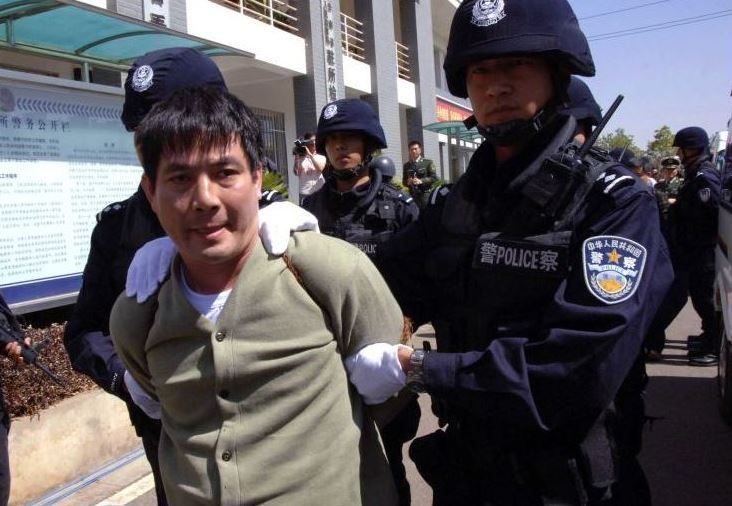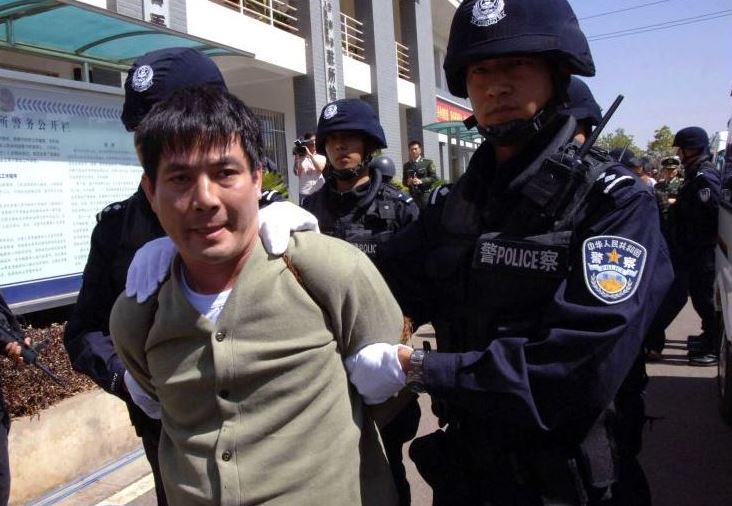The New York Times recently ran a fascinating account of the arrest and execution of Shan drug lord Naw Kham, who was accused of being responsible for the murder of 12 Chinese boat crew on the Mekong in October 2011.
It was 100 miles downstream from China, on the banks of the Mekong River, where a notorious drug lord slipped ashore in the dusk into the hands of law enforcement. Security officials from Laos arrested the trafficker, Naw Kham, but the international manhunt that led to his capture was organized in Beijing, by top Chinese government officials intent on making him pay for the killings of 13 Chinese.
China’s search for Mr. Naw Kham, overseen by its powerful Ministry of Public Security, was a hard-nosed display of the government’s political and economic clout across Laos, Myanmar and Thailand, the three countries of Southeast Asia that form the Golden Triangle. It took six months for China to catch Mr. Naw Kham, a citizen of Myanmar in his 40s, a man of many aliases who was at the center of the booming synthetic drug business in the Golden Triangle, once known for its opium….
[After his arrest] the authorities flew the drug lord from Laos to China, tried him in a provincial court and executed him last month.The Chinese hunt for Mr. Naw Kham was methodical and unyielding. …. Mr. Naw Kham [had proven] to be a formidable target…. In the beginning, the Chinese had no idea of Mr. Naw Kham’s whereabouts, and did not know on which side of the river he was hiding. Gradually, they began picking up his tracks.
In December 2011, they learned he was in northern Laos. … With the help of his supporters in Laos, Mr. Naw Kham evaded the Chinese and at night escaped across the river to Myanmar. … Once back in Myanmar, Mr. Naw Kham shuttled between hiding places in the mountains around the district of Tachilek, a center for the manufacture of methamphetamine. …
As Mr. Naw Kham’s security net evaporated in Myanmar, the Chinese learned that he planned to escape across the Mekong River to Laos in a small boat, Mr. Liu said. The Laotians were alerted… Mr. Naw Kham landed on the muddy banks with two associates. Police captured him as he tried to flee.
Naw Kham’s story is an excellent illustration of the relationship between local power and state power in the Mekong borderlands of Asia.
He was arrested in the village of Ban Mom which, in the 1980s, briefly prospered as a trading conduit between Thailand and Laos. With the Thai-Lao border closed, Thai traders would take their goods through Burma and cross the Mekong to the muddy market of Ban Mom where they would sell to Lao traders who had made the upstream journey from Houayxai and Luang Phrabang. Many of the Lao traders I worked with in the mid-1990s established themselves by taking advantage of the lucrative opportunities created by uneven regimes of regulation in the Thailand-Laos-Burma borderlands.
In historical accounts of the region, the modern “imposition” of definitive borders is often portrayed as obliterating earlier forms of mobility and spatial flexibility. As I wrote in the conclusion to Martin Gainsborough’s edited collection, On the Borders of State Power, “pre-colonial territorial nonchalance is said to have been displaced by colonialism and the formation of modern nation state. Previously fluid spatial practices were displaced by the unambiguous demarcation of national borders and the modern state’s insistence on exclusive sovereignty within its demarcated territory.”
This is all well and good, and it tells part of the story. But Naw Kham’s infamous exploits remind us of another mode of interaction with modern state borders.
Since modern borders were first established, opportunists like Naw Kham have used them to pursue their own economic and political agendas. Far from limiting their ambitions, modern borders have given local strongmen a new resource that they could draw upon in their attempts to exert local and regional power.
Long before Naw Kham, another Shan war lord, Twet Nga Lu, created much greater havoc in the upper Mekong region.
Twet Nga Lu was one of the region’s classic “men of renown.” A former monk, he was an expert tattoo artist and skilled in protecting himself with amulets (he had many of them embedded beneath his skin). In the chaos that embroiled the Shan states in the 1880s he was able, with Burmese backing, to secure control of several townships. Assembling an unruly crowd of followers, he created havoc in the southern Shan states, burning settlements, plundering the countryside, and displacing local rulers. He even visited the British outpost at Fort Stedman hoping to gain British recognition of his chiefly status:
[Twet Nga Lu’s claim] was considered and rejected by the Chief Commissioner. Thereupon he collected a regiment of bravi … and descending on Kengtawng [not Kentung, but a smaller town to the south-east] burnt whatever had escaped former devastations. Compelled to retreat … he retired south on Mongpan, and captured it in December 1887. Again driven out by the Mongnai troops, he fell back beyond the Salween, the Mongnai men following him. But as the pursuit led them into the territory of Mongtung and Mong Hang, which were claimed by the Siamese, the were ordered by the [British] Superintendent to retire to the right bank of the Salween. Twet Nga Lu was left encamped close to Mongtung, where a small Siamese garrison was stationed, and he thus escaped for the time. He was proclaimed a rebel and dacoit and every chief in the Shan states was desired to treat him as an outlaw. (Crosthwaite, The Pacification of Burma, 1968: 167-168)
Even in the 1880s, Twet Nga Lu knew that emerging ideas about demarcated borders and exclusive sovereignty granted him protection when military force failed him. He deliberately crossed into Siamese territory, knowing that the British and their Shan supporters would be unwilling to pursue him there. He regrouped his forces, secured arms in Chiang Mai, and launched another attack on his Shan rivals.
Merely crossing into the territory of a neighbour denied his enemies the power of pursuit.
This was to become a powerful realisation in the history of the borderlands. Borders represent a quite idiosyncratic form of state authority: merely stepping across them can subvert the power of one state by invoking the authority of another.
Rebels and smugglers are regularly portrayed as the enemies of modern borders. But, in fact, they depend on modern state demarcations for their lives and livelihoods.
The modern Shan warlord, Nor Kham, relied on exploiting the integrity of borders to avoid pursuit and capture. It was the Chinese blurring of the bounded sovereignty of the modern state that eventually brought about his downfall:
To counter Mr. Naw Kham’s web of protection, China was able to rely on contacts developed over the past decade from the training of more than 1,500 police officers in Southeast Asia, the official said. China also had an array of informers – “flip-flops,” the official said – from among the increasing number of Chinese petty traders and businessmen in the region.
“He had his people, we had our people,” acknowledged Mr. Liu [leader of the antinarcotics bureau of the Ministry of Public Security] in a rare interview with a foreign reporter in his office in Beijing. … Mr. Liu denied having his own men on the spot [when Naw Kham was arrested], but it was almost certain that Chinese agents were on hand.
 Facebook
Facebook  Twitter
Twitter  Soundcloud
Soundcloud  Youtube
Youtube  Rss
Rss 
